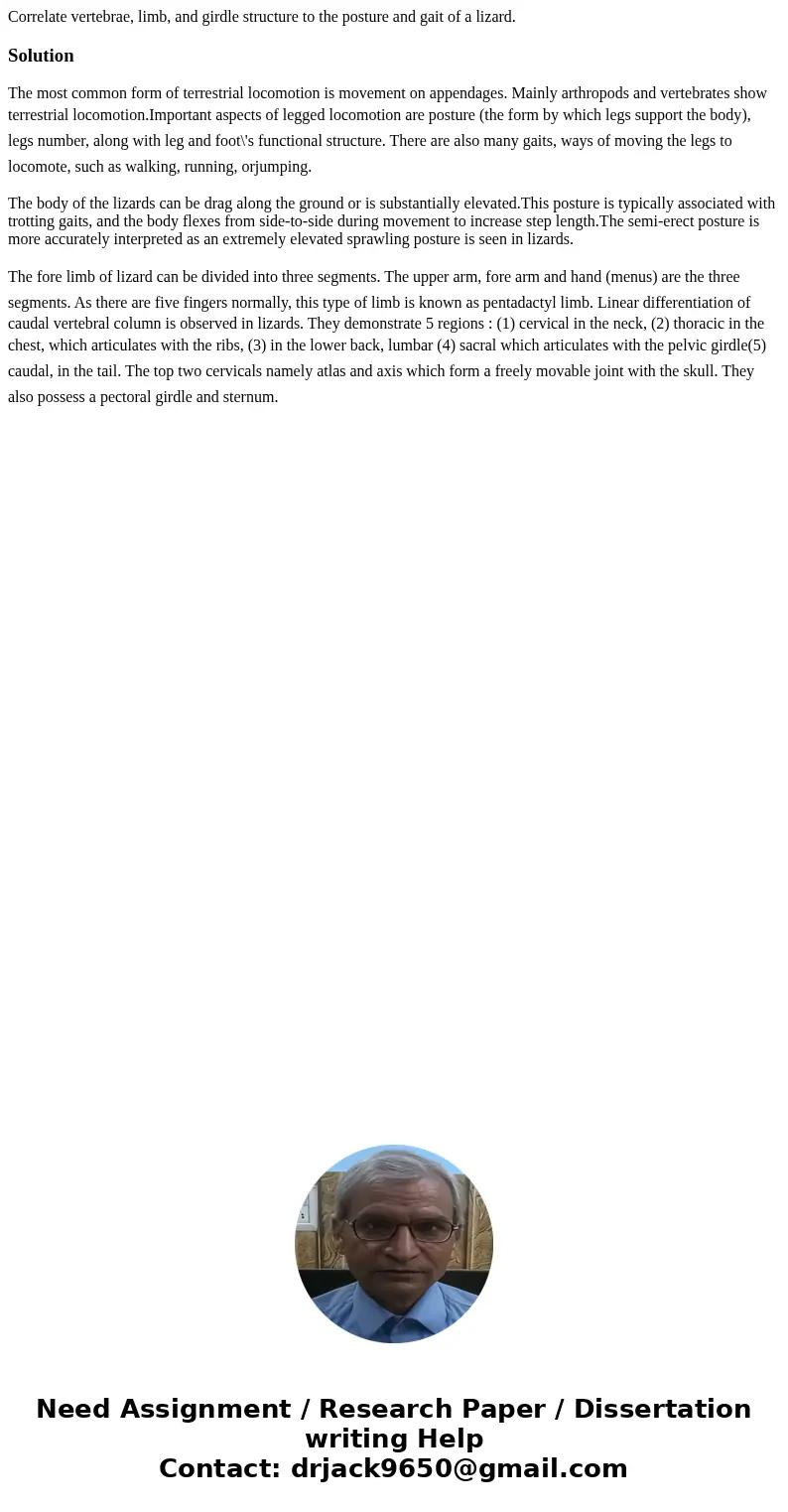Correlate vertebrae limb and girdle structure to the posture
Correlate vertebrae, limb, and girdle structure to the posture and gait of a lizard.
Solution
The most common form of terrestrial locomotion is movement on appendages. Mainly arthropods and vertebrates show terrestrial locomotion.Important aspects of legged locomotion are posture (the form by which legs support the body), legs number, along with leg and foot\'s functional structure. There are also many gaits, ways of moving the legs to locomote, such as walking, running, orjumping.
The body of the lizards can be drag along the ground or is substantially elevated.This posture is typically associated with trotting gaits, and the body flexes from side-to-side during movement to increase step length.The semi-erect posture is more accurately interpreted as an extremely elevated sprawling posture is seen in lizards.
The fore limb of lizard can be divided into three segments. The upper arm, fore arm and hand (menus) are the three segments. As there are five fingers normally, this type of limb is known as pentadactyl limb. Linear differentiation of caudal vertebral column is observed in lizards. They demonstrate 5 regions : (1) cervical in the neck, (2) thoracic in the chest, which articulates with the ribs, (3) in the lower back, lumbar (4) sacral which articulates with the pelvic girdle(5) caudal, in the tail. The top two cervicals namely atlas and axis which form a freely movable joint with the skull. They also possess a pectoral girdle and sternum.

 Homework Sourse
Homework Sourse